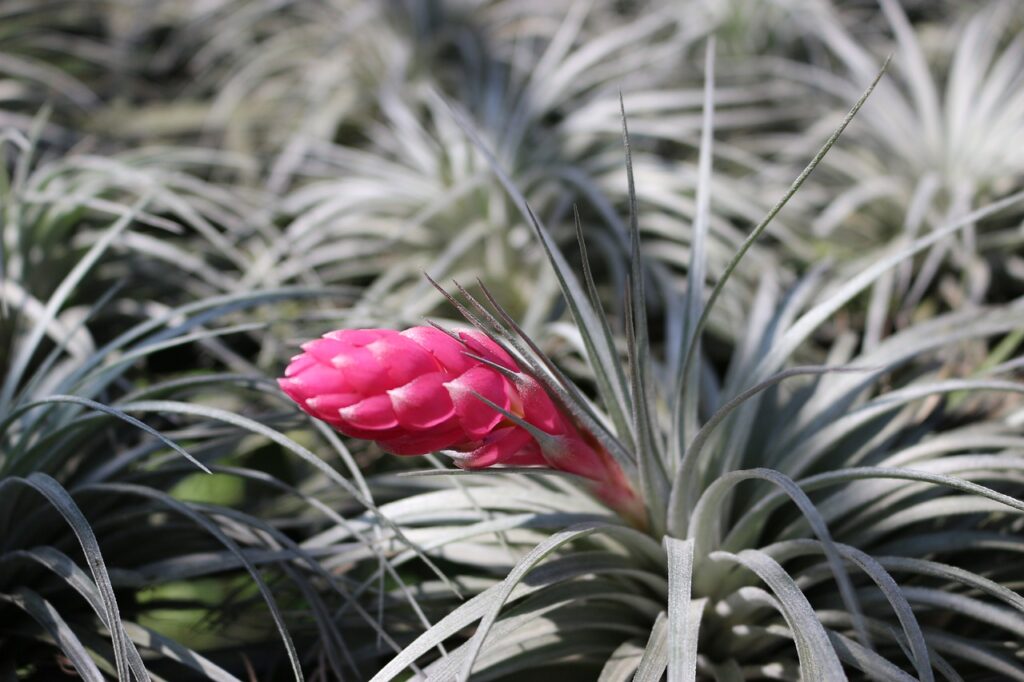If you’re looking to spruce up your house with some houseplants, look no further. Air plants are not only perfect for adding some green to your décor but they’re also a great way to filter out any air pollution in your home.
Air Plants: What Are They?
The air plant is part of the Tillandsia genus which are epiphytes. This means that the plants will attach to other surfaces or plants for support.
However, their roots are for nothing more than physical support and attachment. The plants absorb nutrients and moisture from the atmosphere using trichomes, specialized scale-like structures located on their foliage. This means that any plants the Tillandsia attaches to remain unharmed.
There are more than 500 species of air plants, each with varying leaf colors, textures, and flowers.

Care: Light, Water, and Fertilizer
Air plants require little to no care, making them great for beginner gardeners. The only things really needed to ensure their growth are adequate amounts of light and water.
Light
The plants will need bright, indirect light, making them ideal for use as houseplants. This is because air plants are naturally found growing under the canopy of larger, tropical plants, in outcroppings, and in crevices of rocks.
Water
To water your plant, make sure to dunk it in water for 15 to 30 minutes every other week. After submerging the plant, it is essential that the plant is allowed to dry completely. From there, misting the plant weekly should suffice.
Make sure to keep an eye on the foliage; if the tips of the plant start to curl and/or turn brown, it means the plant isn’t getting enough water.
Fertilizer
Air plants will benefit from fertilizer specially formulated for bromeliads. Simply rinse the foliage of the plants in a diluted liquid solution every other month to see the benefits.
Make sure to keep an eye on your plants; as seasons change, the amount of humidity and light received will also fluctuate. Make sure to adjust your routine as needed to help ensure your plant’s survival and growth.
Propagating Your Air Plant
Air plants can be propagated. To do this, gardeners must wait until the plant flowers, something that will happen only once in the plant’s lifetime.
After the plant flowers, it will produce new plants called “pups.” Before removing the pups, make sure they reach about one third of the mother plant’s size. At that point, the pup can be removed and grown as a separate plant.
Alternatively, the pups can remain attached to the mother plant. This will cause them to form a clump as the mother plant dies.
